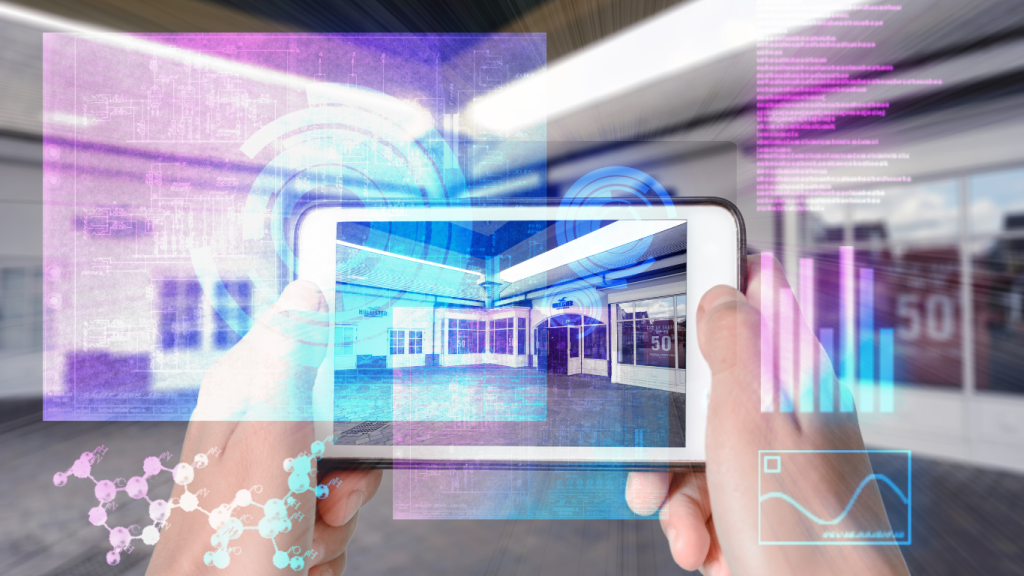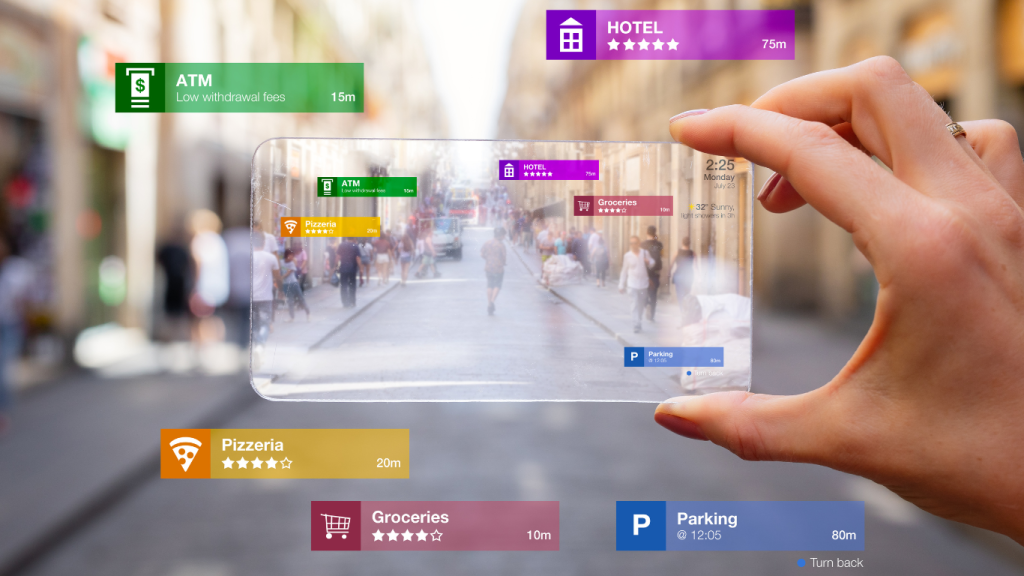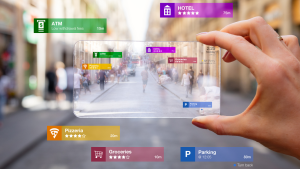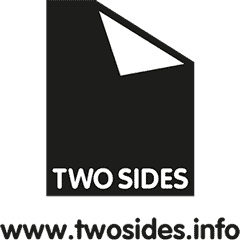In 2017, only 31% of Americans knew what augmented reality was. In 2020, 83.1 million consumers used AR every month. And by 2025, the global AR user base is predicted to reach 216 million users.
Augmented reality (AR) is revolutionising the way that businesses engage with their customers.
This cutting-edge tech seamlessly blends the virtual world with the physical – allowing brands to create immersive and captivating experiences, and consumers to interact with products and services like never before.
Let’s look at some of the latest trends.
Blurring the Lines Between Print and Digital
Interactive Print has undoubtedly emerged as the new hero in omnichannel marketing.
Traditionally, print and digital marketing were viewed as distinct channels. But the latest trend involves seamlessly integrating the two through interactive print. QR codes, image recognition, and NFC technology are being utilised to bridge the gap between the two – allowing users to interact with physical print materials and unlock digital experiences.
Marketers can make the most of this trend by incorporating interactive elements into their print marketing that lead consumers to online content, promotions, or immersive AR experiences.
Unlike QR codes, interactive print works by layering digital content over printed material to effectively bring the print to life – taking direct mail, brochures, press adverts, magazines, calendars, labels, banners, booklets or signage to the next level through immersive, interactive content.
This approach has the potential to reduce marketing costs, as it allows you to not only deliver more content from a smaller print piece, but modify interactive content on longer campaigns, without the need for a reprint.
As well as providing consumers with a superior customer experience, interactive print lets marketers measure numerous metrics on engagement and performance and integrate additional tracking tags for use across other channels – making it easy to monitor the customer journey, and offer targeted, personalised content based on behaviour and preferences.
The Power of Personalisation
AR has the potential to transform customer experiences through unique and highly personalised interactions.
- AR-powered ads
Integrating AR tech into traditional ads can offer customers more interactive experiences. For example: allowing consumers to scan a billboard with their smartphone to play games, access 3D models of products, or unlock hidden content.
- Personalised shopping
A growing number of brands are using AR applications to let customers try on clothing, accessories or makeup virtually to see how they’ll look before making a purchase. This personalised approach to shopping enhances the customer experience, increases their confidence in the products, reduces the likelihood of returns, and boosts customer satisfaction.
- Targeted marketing
Utilising data based on previous purchases, behaviours and interactions is a great way for businesses to fully optimise their marketing strategies. How? By taking the findings and using them to deliver relevant, personalised communications that really resonate with your customers. This also increases the likelihood of conversion, builds stronger relationships, and maximises ROI.

Augmented Reality in Print Marketing
When it comes to incorporating AR into your print marketing campaigns, try these ideas out for size:
- Making mail more immersive
Help your customers to learn about a product or service in a more immersive way by using augmented reality in your printed pieces. Designing a postcard with a scannable QR code that takes customers through to a video demo is a great way to bring your comms to life. This level of interaction can really boost response and conversion rates, while improving the overall customer experience.
- Making it easier for people to purchase
If you’re designing a printed catalogue or sales brochure, enhance the experience by allowing customers to purchase products or snap up services directly from the page. Interactive product pages are brilliant for giving customers an easy way to check real-time availability, explore product details, and check out comparable products. This can also help you to cut down on the amount of copy in your catalogues.
- Making it fun for people to engage
Using AR in your event signage makes it possible for customers to engage with your brand in a more interactive way. For example, a printed banner that launches an enticing AR experience offering rewards or exclusive content helps to drive engagement and increase social media sharing – particularly if you link to something fun like a virtual photo booth with branded snaps!
And if you want to see some great AR in action, Vespa recently used augmented reality to fantastic effect by showcasing their product in a print ad. Scanning the ad took customers to a page where they could create their own custom scooter design from available colours, accessories and styles! They were even directed to their nearest Vespa dealer to make purchasing easier. Genius.
Enhanced Consumer Engagement
Augmented Reality has moved beyond being a novelty. It now stands strong as a powerful tool for marketers to create memorable and interactive experiences, which is critical in today’s overcrowded marketplace. Brands are increasingly leveraging AR to create a 360 experience: enabling consumers to visualise their products in their own environment, before committing to a purchase.
Whether it’s trying on virtual clothing, placing furniture in a room, or previewing cosmetics, AR enhances the decision-making process and boosts consumer confidence.
Interactive Packaging
Packaging has taken on a new dimension with the integration of interactive elements. Brands are now using the power of AR to transform product packaging into an engaging storytelling platform. By scanning the packaging with their smartphone, consumers can unlock exclusive content, access product information, or participate in interactive games.
This trend not only enhances the overall customer experience, but also provides valuable data on consumer behaviour and engagement.
Gamification for Brand Loyalty
Gamification is a powerful strategy for boosting brand loyalty and engagement. More and more marketers are incorporating AR games into their print materials – creating interactive challenges that people can participate in using their smartphones.
These gamified experiences not only entertain customers and increase the user experience but encourage repeat interactions while fostering a definite sense of community among consumers.
Use AR in Your Next Campaign
Embracing the trends in interactive print and augmented reality is essential for staying relevant and engaging with today’s tech-savvy consumers. Marketers who leverage these technologies effectively will differentiate their brands and create memorable experiences that resonate with their target audience.
Keen to learn about the exciting possibilities for innovative campaigns in your print marketing? Get in touch to speak to our team.
Book a Free Data Health Check
Discover how effective your mailing data is with our free report and recommendations. You’ll gain insights into the quality of your data and see how much of your data is healthy. Plus, we’ll include recommendations for improvement and next steps.
To book your Free Data Health Check please fill in the form: Contact Us






















